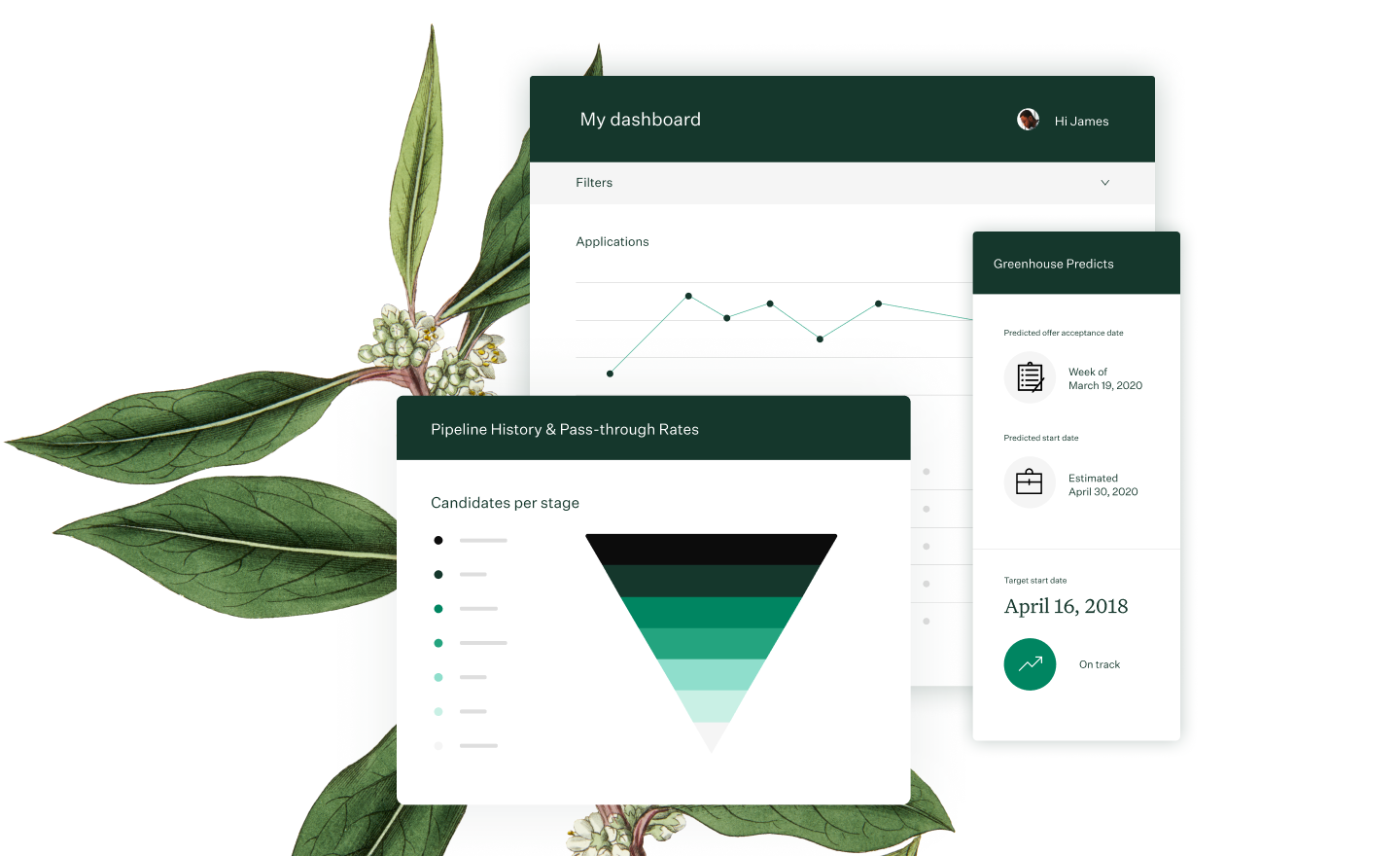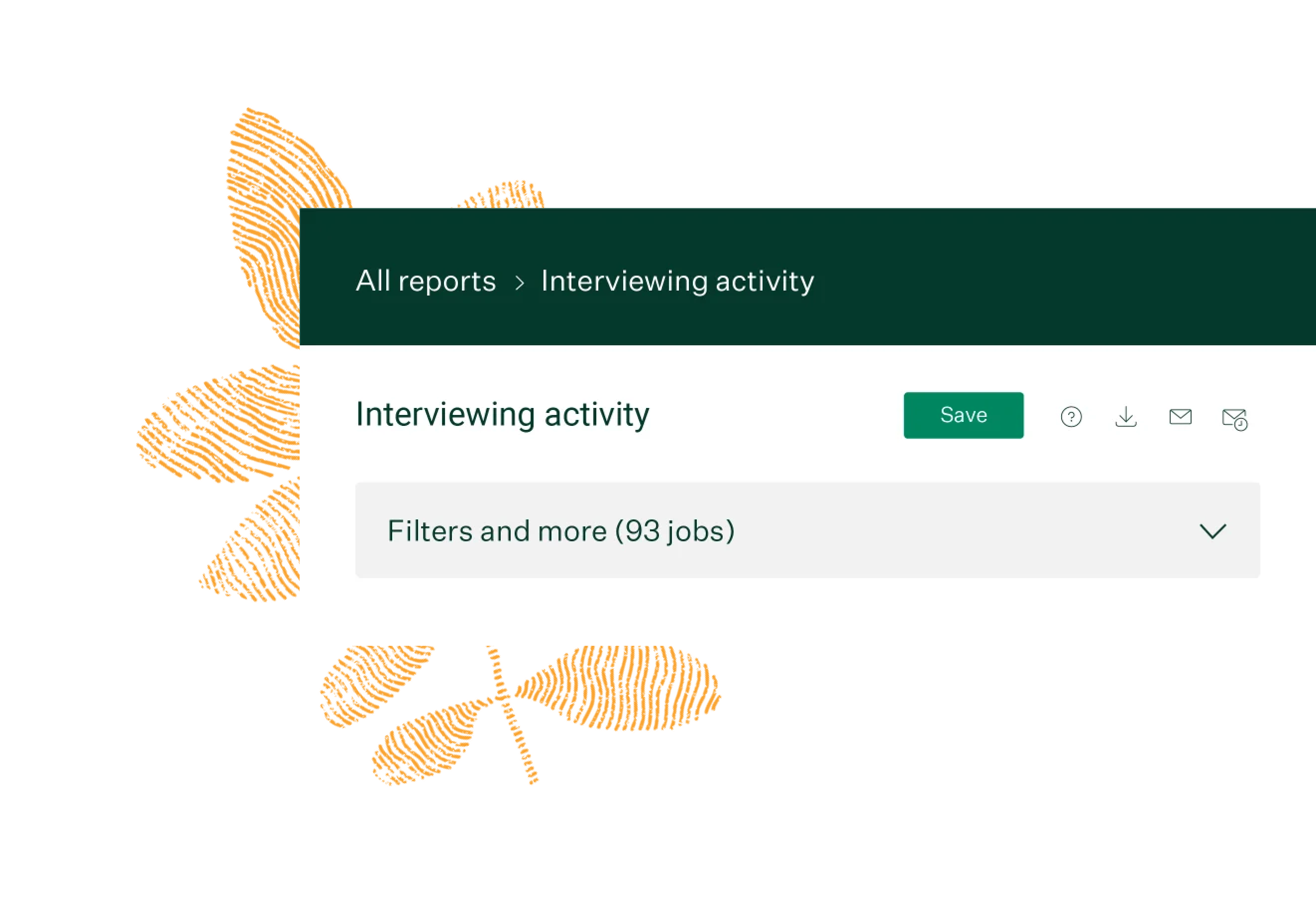
Measurably improve your hiring process with reports
Promote accountability across your team, find out what’s working best and identify areas for improvement.
Greenhouse reporting gives you data-driven answers to your most important hiring questions. From simple dashboards to custom reports, our tools are built to adapt to everyone’s reporting needs.
Use this guide to identify the resources available in Greenhouse to collect and maintain accurate data, and how to implement Greenhouse Reporting.
Step 1
Collect accurate and consistent data
Ensuring accurate, clean and consistent data is the foundation of beneficial reports and practical insights. It’s important to set up your process early so you can trust the accuracy of your reports to inform business decisions.
We’ve compiled actions you should take throughout the hiring process to ensure your data is clean and consistent. We recommend sharing this data quality audit with your team as a reminder of the most important ways to guarantee accurate data.
Be sure to check out our customer education page for the latest offerings on live trainings that cover data quality.
| Setup | Interviews | Decisions |
|
|
|
Step 2
Get an at-a-glance view of core metrics
Report dashboards offer instant answers to key hiring questions and help you understand your core reporting metrics. With report dashboards, anyone at your organization can get at-a-glance information on talent sourcing, pipeline health and hiring processes – with no need to rely on your recruiting operations team, or pull a report.
All you need to do to start using report dashboards:
- Click “Reports” in the navigation bar
- Click “Dashboards” and you'll see different dashboard tabs listed at the top
- Click any tab to find the relevant key data from your hiring process
- Under each dashboard, you can scroll through the widgets displaying specific pieces of data related to the current tab
- Use the filters on each dashboard to adjust the results
Note: Only Advanced and Expert tier subscription customers can save report dashboards for later use and only these tiers have access to the “All Primary Recruiters,” “All Hiring Managers” and job custom fields filters.
Step 3
Use prebuilt essential reports
Greenhouse offers 40+ essential reports covering the most common reporting needs, such as:
- Managing current and past recruiting activity
- Audience-specific reports for stakeholders like hiring managers, executives and your finance team
- Tracking your sourcing and prospecting efforts
- Evaluating team performance
- Running your own analysis based on raw data
We recommend starting with the most popular operational reports used by Greenhouse customers:

Note: With Greenhouse Recruiting Advanced or Greenhouse Recruiting Expert, you have the ability to build your own custom reports with Report Builder. Or, use the BI Connector to send clean data to your existing data tools, like Tableau, PowerBI, etc.
Step 4
Automate your reports
With Advanced and Expert Greenhouse Recruiting, you can easily filter, save and schedule your most critical reports to be emailed to your team on a recurring basis. Here’s how:
- Filter the report to meet your needs (e.g., by the “last 7 days” for a weekly report)
- Save and name your report
- All reports you save will be easily accessible under the “Saved” section, where you can also see when they’re scheduled to be sent out
- Schedule your report – choose who it’s emailed to, add a subject line and message and then set the email cadence
Report templates can be used to drive a consistent framework for reporting, so that everyone in your organization is measured on the same metrics.
Resources
More resources for using reports to improve your hiring process
Data quality
Customer education reporting resources
Reporting made simple webinar series
Visit our customer education page for our on-demand and live reporting trainings
Operational reporting
Reporting on employee engagement
Advanced reporting
Maximize built-in reporting tools